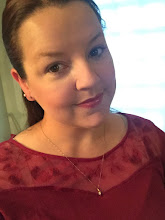Don't learn the hard way, take care of your sewing machine right from the beginning. Now, sometimes when you buy your machine, they offer classes or special help on your particular machine, as was the case with my machine. I went to a class on the Singer machine last Thursday, and have another one this week. Even if you are a seasoned sewer, you can get some specialized attention with these classes. For example, this class talked a bit about the appropriate needles and thread to use with your machine. So, I will pass on some information.
Needles: First, and most important, change your needle often! Most quilting books suggest a change of needle after one project or 8 hours of use (whichever comes first). It may still seem sharp, but as the needle gets dull, it will punch and stretch your fabric. Research what type of needle you will need to use. For normal projects, a Universal size 90 needle would be appropriate. But, you may need to use a Denim needle for heavier fabrics, or a ball point needle for knits. I found this great chart to help you:
http://www.sewing.org/files/guidelines/22_115_sewing_machine_needle_charts.pdf
There was also a great tip at the class. When you are switching back and forth between needles frequently, keep them on post it notes with the type of needle and size written on it. Then, when you are using the needle, you can keep the post it on the machine to remind you which needle you are using. And when you are not using the needle, you can keep the needle on the post-it so you don't have to try to remember which needle is which.
Another organization tip that I saw in a magazine: for long term needle storage, you can use a medicine sorter (You know, the ones with the days of the week compartments). Then, each of the compartments can be used for different sizes of needles or different types. For example: Monday is for Universal size 90, Tuesday is for all other Universal sizes, Wednesday is for Microtex needles, etc.
Subscribe to:
Post Comments (Atom)

No comments:
Post a Comment